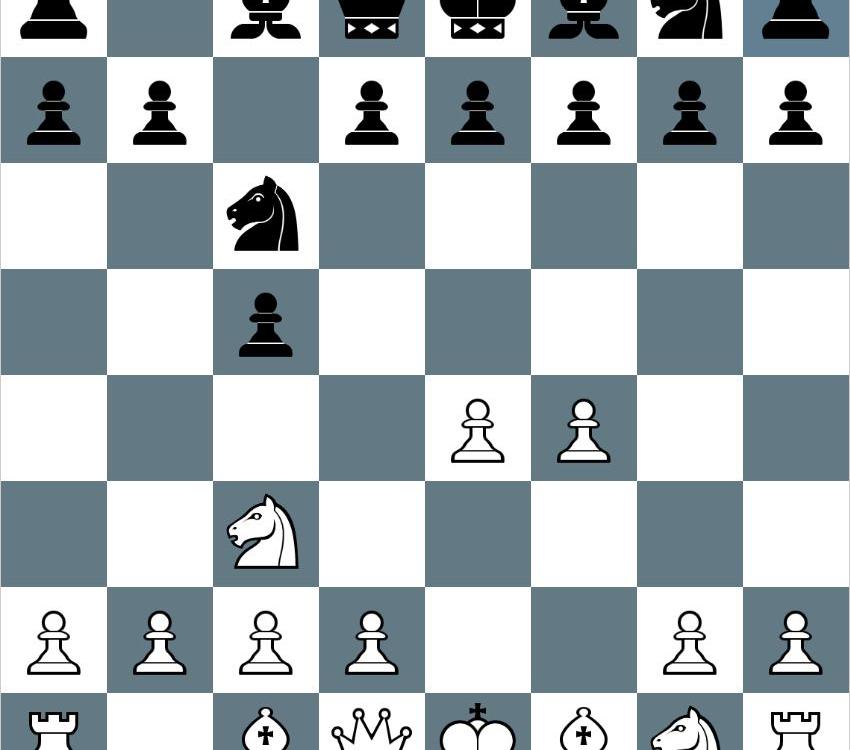
Key to Opening Success Part 3
At the core of every opening out there is the famous main line. Often times, positions arising from a variety of openings can point back to the roots of the main lines of those openings. As such, it is important that anyone looking to take up an opening not only knows the basic setup of the main line of that opening, but also, understands the generic plans of that main line. For the most part, the chess world has done a stellar job in adapting to the increasing demand of knowledge of the main lines. However, in the progression towards this greater knowledge, players have begun to neglect the important sidelines that could potentially cause them serious problems down the road.
For anyone below the rating of 2400, it is imperative that you only spend 30% of your opening study with a focus on the main lines. Often times, the sidelines arise just as frequently, and it is important to know how to play against these sidelines effectively. Once you develop a solid foundation in reaching favorable positions against these sidelines, then you know it is time to move on to more in depth main line study. But here is the funniest part about all of this.
At the sub-2400 level, players avidly play sidelines (often more than the main lines) with the hope of surprising their opponent, and winning off this "element of surprise". If you learn to effectively counter these sidelines, you will beat a lot of these players, due to a favorable opening advantage, and your rating will increase. As your rating increases, your opponents begin to understand why it is important to play the main lines, as opposed to sidelines, and begin to study those in depth. Only now is it necessary to devote more than 30% of your time towards the main lines to keep up.
As a former Sicilian Dragon player, the Grand Prix Attack was always a sideline I loathed facing. I lost a great deal of games against players who set up an attack, and just went haywire on the kingside. I ultimately realized that I had to learn the ideas of the Grand Prix for black if I wanted to keep playing the Sicilian because it was a pet of many of my opponents. The trick I learned to dealing with it was for me to realize that there was a completely different game arising from the Grand Prix than I was used to, and I would have to learn how to play that type of game. I will walk you through the basic plans for the black side of the Grand Prix. But first, here is an example of what can happen if you underestimate the sideline.
The Grand Prix, believe it or not, is slightly inferior for white because of the fact that it gives black serious control over the center. Knowing the plans is simply about knowing how to take advantage of this center, while warding off white's should-be-futile attack. The best setup against the Grand Prix is to stick with the fianchetto system and counterattack the center. There are three main white plans that black has specific counter plans for:
Plan 1: White early f5 push - Black ignores and later pushes on d5
Plan 2: White castles and tries to maneuver - Black quickly pushes d5 and proceeds to take the center
Plan 3: White pushes early e5 to limit dark square bishop activity - Black picks at the weakness and obtains a strategic edge
Of course there are ways for white to digress here and there from the main plans, however, the main plans for black should always stay the same. Proactively attack the center while keeping an eye on what white is trying to do. You will find that white's attack is often less than what you thought it would be.
More importantly, however, the Grand Prix is just one opening that proves why the study of sidelines is more vital at the sub-2400 level. Knowledge of these sidelines will help get you far and keep you well prepared against opponents who frequently employ them. It may seem like a large amount of time but 70% of your total opening study is the amount of time you should dedicate to the sidelines. Think about it this way. You are 6-0 going into the final round of a 7 round tournament. You are black, and your opponent is an avid e4 player. He normally plays the main line Sicilian which you are well prepared for, however, since he knows you are weak against anti-Sicilians, he decides to play the Grand Prix Attack. Now imagine that exact same situation except you are now the anti-Sicilian expert, and your opponent decides, as a result, to avoid the anti-Sicilian and go into the main line Sicilian. Which case would you prefer?